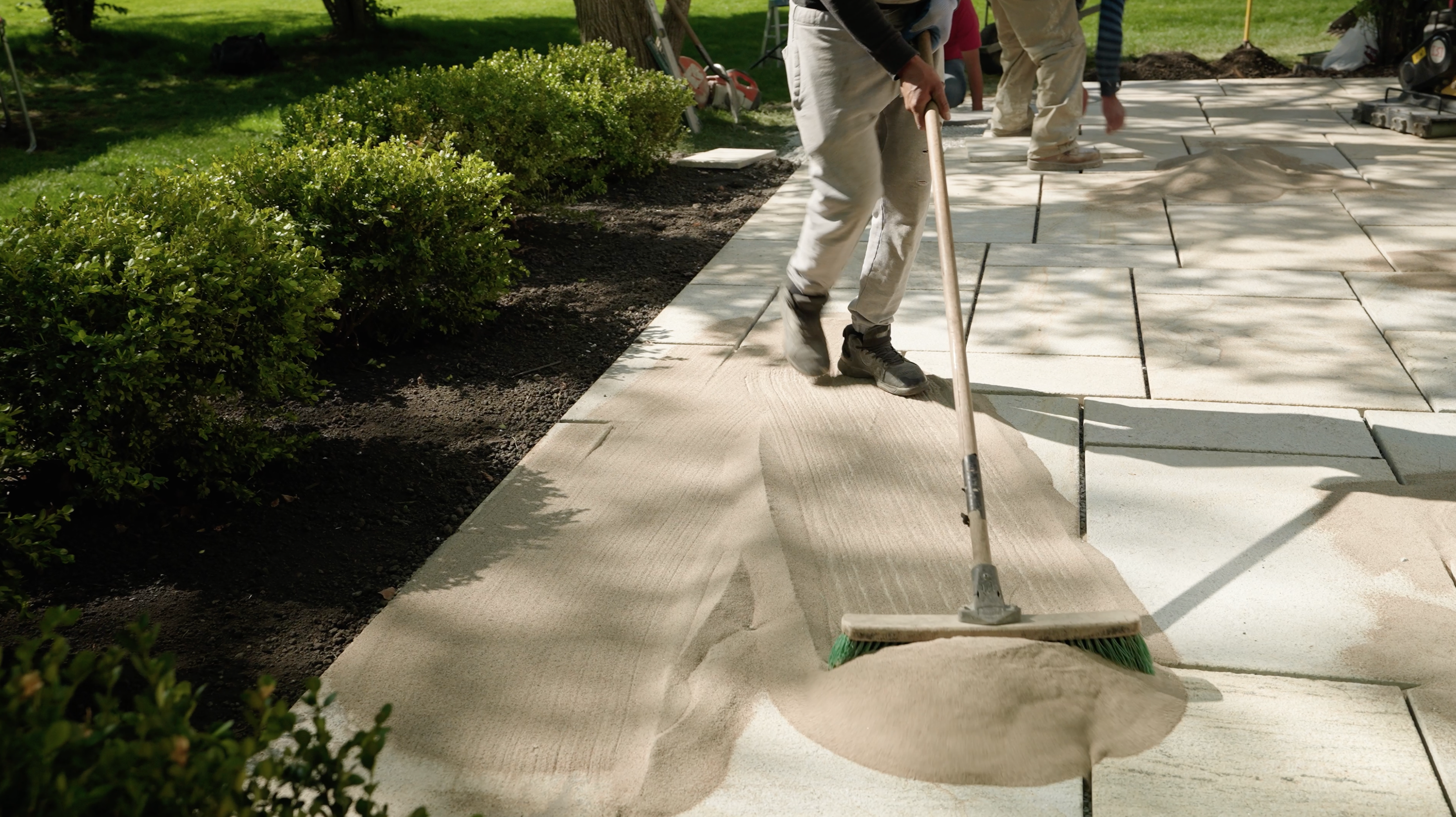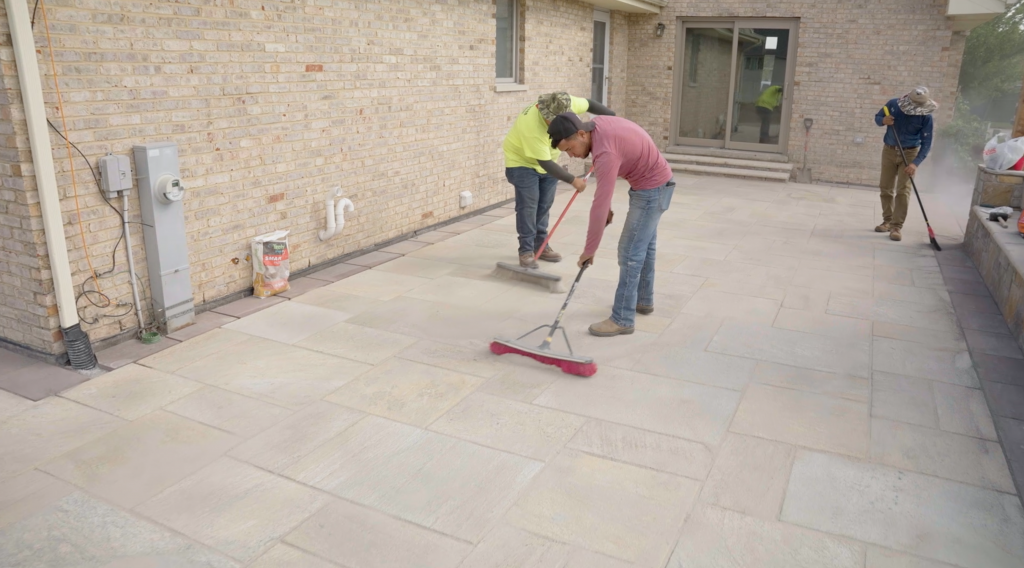
The Art of Hardscaping: Unveiling the Benefits of Polymeric Sand
Fill the Gaps with Polymeric Sand
Polymeric sand is to hardscaping what grout is to stone veneer. It fills the gaps between each stone, adding an attractive, durable border that protects the structural integrity of the mosaic.
Polymeric sand is what it sounds like: grains of sand mixed with polymers that bond together once mixed with water. While it is not the only type of material used for filling joints – standard fine sweeping sand is still more widely used by installers – it offers advantages that make its modestly higher price point worth it.
Stop Weeds and Ants
Among them, joints filled with polymeric sand can stay intact for up to a decade. Unlike standard sand fill, they are resilient in the face of heavy rains, winds and freeze-thaw cycles, and can’t easily be picked apart by ants.
Patios and walkways sealed with polymeric sand are also less likely to suffer weed outbreaks. Because the grains are bonded tightly together like cement, vegetation can’t push through like they can with loose fill and seeds won’t have cracks to seep through. Once weeds get established, they can spread rapidly and become tough to control.
“Every spring I would go out thinking I could knock the weeds out in one day, and then you realize just how many joints there are. And I’d say wow, I did not anticipate this being as hard as it is,” Instone Video Producer Ken Czechanski recalled of his old patio, which did not use polymeric sand. “It’s long and arduous to sit there on your knees scraping them out.”
Additional Benefits
In a recent episode of InBuilding Design, Czechanski welcomed the crew to his Chicago area backyard to chronicle the replacement of his cement paver patio with one made of Aura Natural Landscapes natural stone pavers. Another benefit he’s noticed to using polymeric sand is its ability to protect the base of the patio. As seen in the episode, his old patio had multiple loose pavers that presented a trip hazard and pooled water during storms. Just as potholes form when water freezes and melts beneath the roadway, excess water seeping through your joints in the winter can chip away at a patio’s stability. Czechanski immediately noticed that the polymeric sand was helping control stormwater more effectively.
“When it rains, as soon as it stops, you can see the stones begin drying immediately,” he said. “Polymeric sand is protecting the base and preventing the stones from shifting.”
Polymeric sand is available in a variety of color blends, giving contractors plenty of options to fulfill the desired look of the project. Czechanski considered three colors that could serve as an accent to his Aura Sandy Point granite stones – a gray, a tan, and a brown.
“We ended up going with the brown because it provided a nice contrast to the stones, which were lighter like the beach,” he said. “It also helped to highlight the pattern, which had brown speckles in it.”
Installing Polymeric Sand
Filling joints with polymeric sand is simple. As seen in the clip above, the first step is to pour the sand onto the patio and use a broom to sweep it into the gaps. Excess sand is carefully swept off the patio to ensure it won’t bond to the stone face later.
Once the joints are properly filled, the installers wet the patio down with a garden hose on a shower setting – strong enough to rinse off any residue, but light enough that it won’t blast out the sand. The water activates the polymeric sand and makes it bond together.

Try out Color Combinations
You can use the Instone Visualizer to help select a stone and polymeric sand combination that’s right for your project. The online tool enables you to upload photos of a property and instantly simulate what it would look like with Instone’s full range of products.
Although Instone doesn’t carry polymeric sand, the Visualizer does model several colors to give users a sense of how it would look with various stone types. Customers may purchase polymeric sand through their dealer or browse product choices at a local home improvement store.
